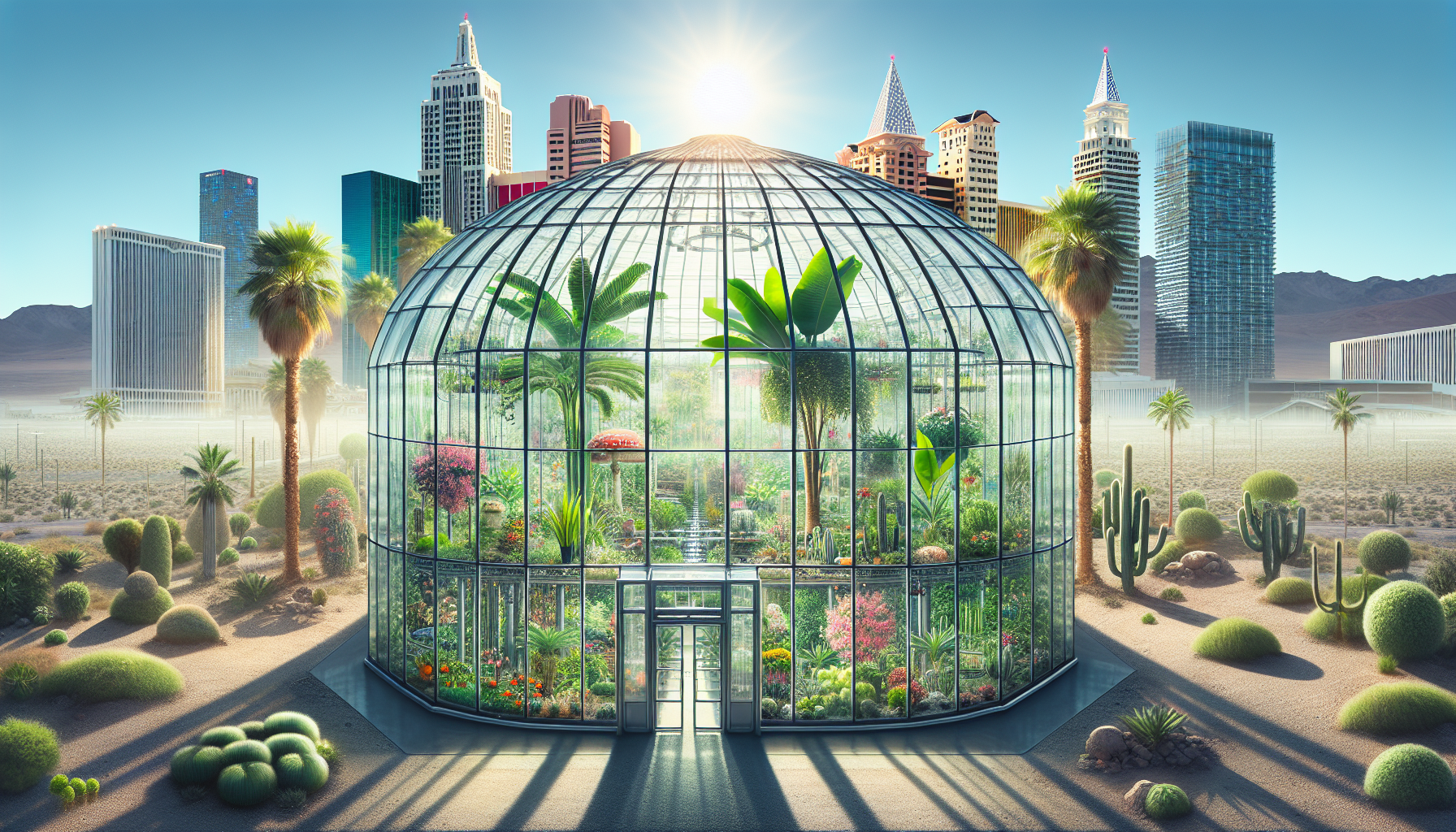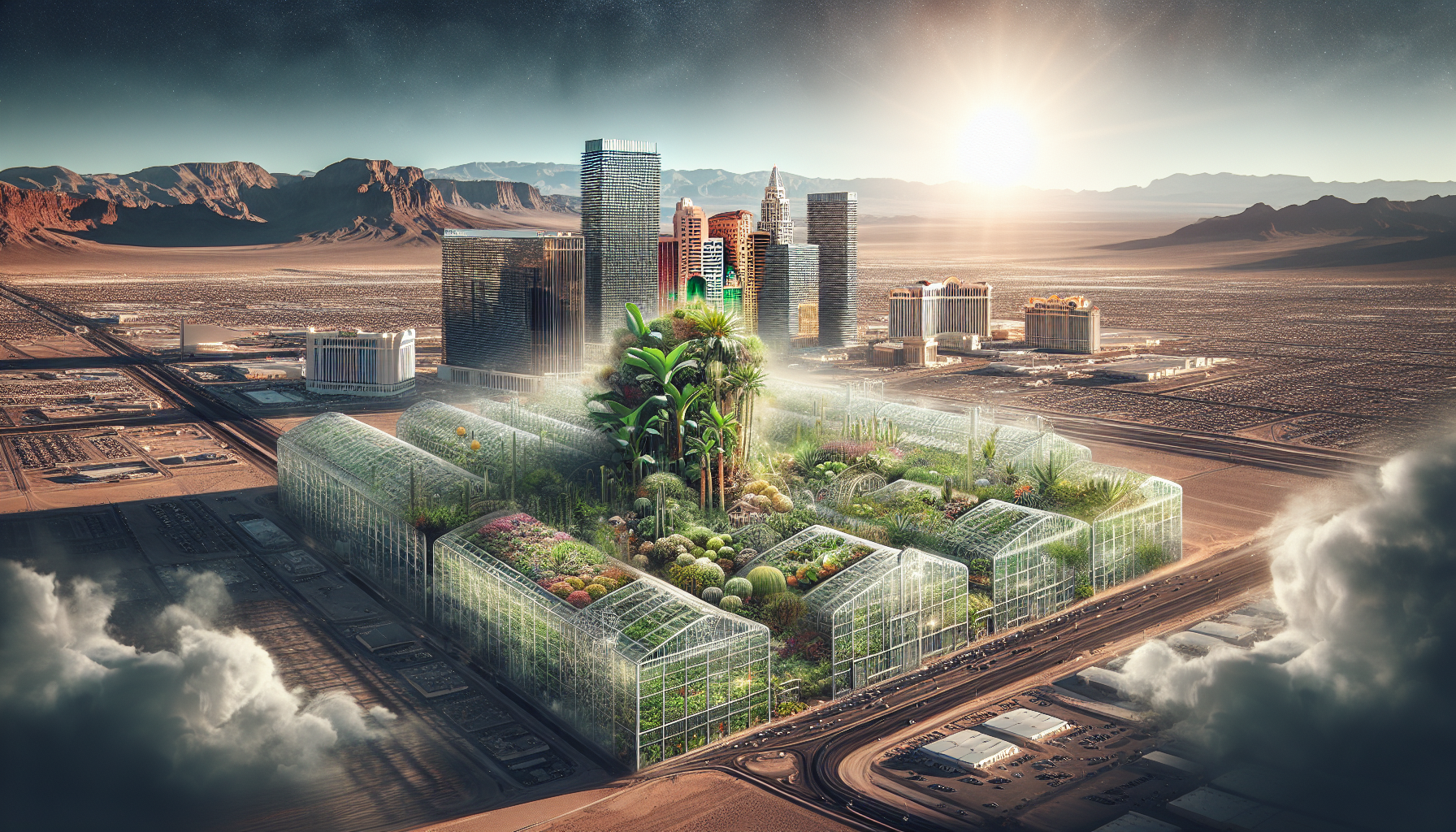
In the city of bright lights and thrills, Las Vegas, you might not assume it’s a flourishing hub for greenhouse gardening. However, with strategic planning and execution, flourishing greenhouses are something many of you have achieved. The “Successful Strategies for Greenhouse Gardening in Las Vegas” article aims to arm you with a rich cache of insights, tips, and strategies, specifically tailored for greenhouse enthusiasts who are navigating the unique desert climate of Las Vegas. Get ready to unleash your green thumb while fine-tuning your approach to greenhouse gardening, Las Vegas-style!

Understanding the Las Vegas Climate
Gardening in Las Vegas is a unique experience given its desert-like climate. To ensure your greenhouse gardening endeavor is successful, understanding this peculiar climate becomes imperative.
High temperatures and their effects on plants
Las Vegas is renowned for its scorching heat, with an average high temperature of 80 degrees Fahrenheit. Such high temperatures can stress plants, causing them to wilt and dry out quickly. The heat can also accelerate the growth cycle, which isn’t always beneficial, as it could lead to premature flowering or fruiting. This means you’ll need to invest in heat-tolerant plants and be prudent about your watering regime.
Low humidity challenges
Alongside its high temperatures, Las Vegas also presents challenges with its low humidity levels. The dry atmosphere can lead to quick water evaporation, leaving your plants parched and dry. The low moisture levels can also stunt the growth of fruits, vegetables, and flowers.
Understanding the seasons for optimal planting
Contrary to what one might perceive, Las Vegas does have distinct seasons: hot and not-so-hot. The not-so-hot stage happens in winter, while the hot series stretches from spring to fall. By understanding these seasons, you can schedule your planting and harvesting periods optimally.
Designing Your Greenhouse for Extreme Weather
Being exposed to extremely hot weather for most of the year, choosing the right design for your greenhouse in Las Vegas is a necessity.
Choosing the right materials for durability
Since your greenhouse will be exposed to severe weather conditions, the materials chosen should be capable of withstanding such harshness. Opt for durable and heat-resistant materials, such as polycarbonate or high-grade glass.
Insulation techniques to combat heat and cold
Implementing effective insulation techniques can help maintain the desirable temperature in your greenhouse even during violent weather fluctuations. You could consider double-glazing your greenhouse or using thermal curtains to lock in the warmth during winter and keep the excessive heat at bay in summer.
Ventilation systems to manage temperature and humidity
Installing an efficient ventilation system can significantly help maintain a stable temperature and an optimum humidity level in your greenhouse. This allows you to control the environment your plants are growing in, so you can tweak it as necessary.
Shading options to protect against intense sun exposure
By utilizing different shading options, you can shield your greenhouse from the intense Las Vegas sunlight. Shading paint, netting, or cloth can be used to reduce the sun’s direct impact, helping you manage temperature and light levels effectively.
Water Management Strategies
Given the low rainfall in Las Vegas, water management is an important aspect that cannot be overlooked.
Efficient irrigation systems designed for arid environments
To promote effective water usage, installing an efficient irrigation system, such as a drip irrigation or soaker hose system, can be beneficial. These systems direct water to the roots, thereby ensuring your plants get the water they need without unnecessary wastage.
Water conservation methods
Adopting water conservation methods, like mulching and use of water retention crystals, can help conserve water in the desert climate of Las Vegas. Mulching helps reduce evaporation, while water retention crystals store water and gradually release it, offering a steady supply to the plants.
Rainwater collection and usage
Though limited, rainwater in Las Vegas can be collected and used to water your greenhouse plants. Installing rainwater barrels at strategic locations can help you make the most of the sparse rainfall.
Selecting Suitable Plants for a Desert Greenhouse
The right choice of plant can make or break your gardening endeavor in a desert environment.
Heat-tolerant vegetables and fruits
When choosing the plants for your garden, consider veggies and fruits that can handle the desert heat, such as tomatoes, peppers, squash, and melons. These plants not only fare well under the harsh sun, they also yield bountiful produce.
Desert-adapted flowers and ornamentals
Certain ornamental plants and flowers are adapted to desert climates and can bring color and beauty to your garden. Options include petunias, marigolds, and hibiscus. They’ll not only thrive in the heat, but also enhance the visual appeal of your garden.
Best practices for crop rotation
To ensure your soil remains fertile and nutrient-rich, it’s important to practice crop rotation. Following a rotation cycle can increase yields, prevent disease, and improve soil structure.

Soil Preparation and Management
In the high heat and low humidity of Las Vegas, soil management is crucial for a thriving greenhouse garden.
Amending soil for better nutrient retention
Rich, nutrient-dense soil is the foundation of any productive garden. Amending your soil with organic matter, like compost or manure, can increase its nutrient retention and help your plants thrive.
Preventing soil salinity issues
Due to the high evaporation rate in desert climates, salts can concentrate in the soil, harming plant growth. You can prevent this by using gypsum or lime in your soil.
Using mulches to conserve water and moderate soil temperature
Incorporating organic mulches like straw or wood chips helps maintain the soil temperature and reduces water evaporation, reducing the frequency of irrigation and promoting healthier plant growth.
Climate Control Techniques
More than just a fancy addition, climate control in a greenhouse is crucial to provide a favorable growing environment for your plants.
Automated systems for precision temperature management
As your greenhouse garden grows, you may want to explore automated systems for temperature management. These systems maintain the ideal temperature in your greenhouse, adjusting things like heating, cooling, and ventilation as necessary.
Humidifiers and dehumidifiers
In Las Vegas’ dry climate, a humidifier can add much-needed moisture to the air. Conversely, a dehumidifier can help manage any excess humidity that may occur during cooler months or when using watering systems.
Timers and sensors for efficient operation
Timers and sensors can automate processes like watering, lighting, and ventilation. This not only makes your job easier, but also ensures your plants are receiving what they need exactly when they need it.
Lighting Solutions for Year-Round Growth
Having the appropriate light in your greenhouse is paramount, as it directly impacts plant growth.
Supplemental lighting options
During the shorter daylight hours of winter, supplemental lighting can help to ensure your plants receive enough light. Introducing grow lights to your setup can offer your plants the light spectrum they need to thrive.
Adjusting light schedules for various plant stages
Different stages of plant growth require different light durations. Seedlings require light for longer periods while mature plants need less. Adjusting your lighting accordingly can support the different growth stages of your plants.
Energy-efficient lighting choices
Utilizing energy-efficient lighting options, like LEDs, can offer the desired intensity of light without significantly increasing your energy consumption or heating the greenhouse.
Pest and Disease Prevention
Pests and diseases are commonplace in any garden, even in a controlled environment like a greenhouse. Hence, it’s crucial to be ahead of the game and prevent those issues before they occur.
Integrated Pest Management (IPM) strategies
IPM focuses on preventing pests using eco-friendly methods. This might include introducing beneficial insects that prey on the pests, using traps and screens, or maintaining rigorous sanitation practices.
Natural and chemical-free pest deterrents
Natural deterrents can also help keep pests at bay. These might include companion planting, where specific plants repel certain pests, or natural sprays made from household items like vinegar and garlic.
Recognizing signs of plant diseases and addressing them early
Early detection is key in tackling plant diseases. Monitoring your plants regularly for signs of problems will allow you to address issues before they become widespread.
Maximizing Space with Vertical Gardening
Even a small greenhouse can be maximized with the clever use of space. One such method is vertical gardening.
Implementing trellises and hanging pots
Trellises and hanging pots are a great way to grow plants upward, offering plenty of room for growth without taking up valuable floor space. Moreover, it also helps in maintaining air circulation and reduces chances of pest infestations.
Benefits of vertical gardening in small spaces
Maximizing vertical space not only allows for more plant varieties but also makes watering, pruning, and harvesting easier. The ability to accommodate more plants ultimately means a higher yield.
Compatible plants for vertical gardening systems
Some plants are naturally better suited to vertical gardening. Climbing plants, such as cucumbers, tomatoes, and beans, are great options, as are plants with compact growth habits, like herbs and strawberries.
Adapting to Changing Conditions
In the gardening world, adaptation is the name of the game. As the Las Vegas climate can fluctuate, being flexible and prepared for change is essential.
Monitoring climate trends and adjusting practices accordingly
Keeping an eye on climate predictions can help you plan your gardening schedule and select the right crops. Practicing flexible gardening habits will allow you to adapt to changing weather patterns and maintain a productive garden all year round.
Experimenting with new plant varieties
Being open to trying new plant varieties will not only increase the diversity in your garden but will also offer you plenty of options when one type of plant does not fare well in a particular season.
Staying informed on innovative gardening technologies and methods
The field of gardening constantly innovates with new technologies and methods coming to the fore. Staying updated with these advancements can lead you to discover new strategies for managing your greenhouse in the unforgiving Las Vegas climate. Never underestimate the value of ongoing learning in the gardening journey. Happy gardening!

